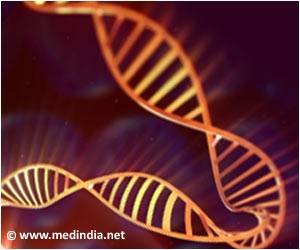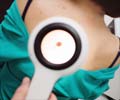Using infrared spectroscopy, blood serum analysis can help diagnose melanoma and lymphoma and can be used as a tool to screen the cancers.
- A blood test using infrared spectroscopy can be used to diagnose lymphoma and melanoma.
- Infrared spectroscopy can detect biochemical changes induced by skin cancer and tumors of the immune system.
- Fourier Transform Infrared (FTIR) spectroscopy in Attenuated Total Reflection (ATR) could provide a cheaper, less invasive alternative.
New Diagnostic Tool
Early diagnosis and treatment of both the cancers improve the patients' chances of survival and so developing a rapid and reliable pre-screening strategy is critical. To avoid delay in diagnosis and to screen for the diseases, blood serum derived from experimental mice were tested using mid-infrared spectroscopy.Mid-infrared spectroscopy helps differentiate mice with non-Hodgkin's lymphoma and subcutaneous melanoma from healthy mice and also between these two conditions. To characterize biological samples at the molecular level, the mid-infrared spectral region of the electromagnetic spectrum is frequently used.
The findings of a recent study suggest infrared spectroscopy can detect biochemical changes induced by non-Hodgkin's lymphoma, a solid tumorous condition of the immune system.
Fourier Transform Infrared (FTIR) spectroscopy in Attenuated Total Reflection (ATR) sampling mode compared to other vibrational spectroscopy provides high-quality results with better reproducibility. It has attracted scientists' attention for its rapid and reliable detection of various health conditions using body fluid samples.
Dr. Unil Perera, Regents' Professor of Physics at Georgia State said, "This study shows infrared spectroscopy can identify cancer. Right now, when you go to the doctor, they do blood tests for sugar and several other things, but not for serious diseases like cancer and colitis. If you are a healthy person, there is a range that is normal. One day, we hope that even these serious diseases can be rapidly screened. Your primary doctor could keep a record of your number and check that every time you come back. Then, if there is some indication of cancer or colitis, they can do biopsies, colonoscopies, etc."
Infrared Spectroscopy to Diagnose Two Cancers
The research team used mice with lymphoma and melanoma cancers. Blood serum droplets extracted from cancerous mice and control mice were placed on an ATR crystal of the FTIR instrument. The serum absorbed infrared beams and reflected them creating a wave that was recorded. Further, this wave was used to produce an absorbance curve with peaks that identified the presence of certain biomarkers in the sample.The scientists compared the absorbance curves from the control and tumorous mice. The biochemical changes induced by non-Hodgkin's lymphoma and subcutaneous melanoma in the serum samples were assessed.
Mice and humans have some biomarkers in common and so the findings are applicable to humans. In previous studies on colitis, Perera and his colleagues identified specific chemicals that changed in humans and mice when colitis was present.
The team can develop detectors for these particular absorbance peaks, which doctors could use to test patients' blood samples for these cancers.
Also, these biomarkers can be tracked from infancy and can be monitored over the years to know exactly when the numbers begin to change. Dr. Perera said, “To make before and after comparisons of the blood samples, the data could be entered into a computer program and available statistical analysis software would determine any significant differences. Doctors wouldn't need to do any sophisticated analysis.”
In the future, Perera and his colleagues would like to use samples from human patients for infrared spectroscopy studies of cancer and other diseases.
Reference:
- Hemendra Ghimire, Mahathi Venkataramani, Zhen Bian, Yuan Liu, A. G. Unil Perera. ATR-FTIR spectral discrimination between normal and tumorous mouse models of lymphoma and melanoma from serum samples. Scientific Reports, 2017; 7 (1) DOI: 10.1038/s41598-017-17027-4
Source-Medindia
















